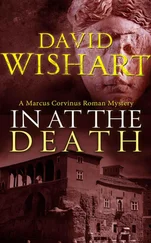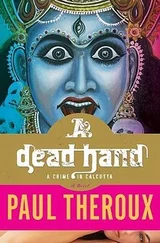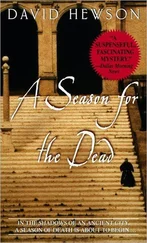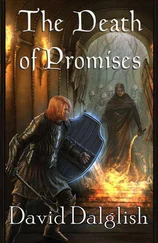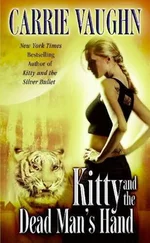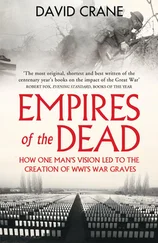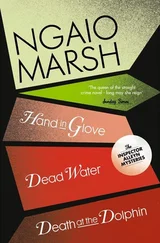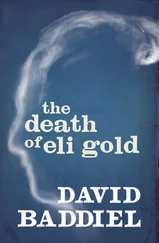16 Yarynich details the test on p. 170 in C 3 . The delay was described in an interview with the author.
CHAPTER 7: MORNING AGAIN IN AMERICA
1 Reagan, An American Life , p. 589.
2 Massie first met with Reagan January 17, 1984, before the trip. She reports meeting him twenty-two times in his second term, and taught him the Russian proverb Doveryai no proveryai , or “Trust, but Verify.” See http://www.suzannemassie.com . Also see Deborah Hart Strober and Gerald S. Strober, The Reagan Presidency: An Oral History of the Era (Washington, D.C.: Brassey’s, 2003), pp. 222–228. Reagan’s diary, March 1, 1984.
3 Jack F. Matlock Jr., Reagan and Gorbachev: How the Cold War Ended (New York: Random House, 2004), p. 88.
4 Reagan diary, March 2, 1984.
5 Reagan, An American Life , pp. 594–597.
6 Christopher Andrew and Oleg Gordievsky, KGB: The Inside Story (New York: HarperCollins, 1990), p. 602.
7 Andrew and Gordievsky, pp. 603–604.
8 NSDD 119, Jan. 6, 1984. Christopher Simpson, National Security Directives of the Reagan and Bush Administrations: The Declassified History of U.S. Political and Military Policy, 1981–1991 (Boulder: Westview Press, 1995), pp. 374–378.
9 Peter Grier, “The Short Happy Life of the Glick-Em,” Air Force magazine, Journal of the Air Force Association, vol. 85, no. 7, July 2002.
10 Anatoly Chernyaev, My Six Years with Gorbachev (University Park, Pa.: University of Pennsylvania Press, 2000), p. 9.
11 Herbert E. Meyer, vice chairman, National Intelligence Council, “What Should We Do About the Russians?” June 28, 1984, NIC 03770-84.
12 Matlock, p. 95.
13 Reagan diary, April 9, 1984.
14 David Hoffman, “Chernenko ‘Disappointed’ White House,” Washington Post , April 10, 1984, p. 9.
15 Reagan, An American Life , p. 602. Also see SNIE 11-9-84, Soviet Policy Toward the United States in 1984 , Aug. 9, 1984.
16 Seweryn Bialer, The Soviet Paradox: External Expansion, Internal Decline (New York: Knopf, 1986), see Ch. 6.
17 George Shultz, Turmoil and Triumph: My Years as Secretary of State (New York: Charles Scribner’s Sons, 1993), p. 480.
18 Shultz, p. 484. Gromyko recounted the moment to Dobrynin as if it had been more an exchange of slogans. Anatoly Dobrynin, In Confidence: Moscow’s Ambassador to America’s Six Cold War Presidents (New York: Times Books, 1995), p. 556.
19 Shultz, p. 484; Andrei Gromyko, Harold Shukman, trans., Memories (London: Hutchison, 1989), p. 307.
20 Don Oberdorfer, From the Cold War to a New Era (Baltimore: Johns Hopkins University Press, 1998), p. 93.
21 Steve Coll, Ghost Wars (New York: Penguin Books, 2004), p. 102.
22 Andrew and Gordievsky, p. 604.
23 Shultz, p. 477. Andropov had proposed a unilateral moratorium on space weapons the previous year, just before the KAL shoot-down.
24 Nigel Hey, The Star Wars Enigma: Behind the Scenes of the Cold War Race for Missile Defense (Dulles, Va.: Potomac Books, 2006), p. 136.
25 The New York Times raised questions Aug. 18, 1993, about whether the test was rigged. The General Accounting Office found no evidence that it was, though the playing field was slightly tilted by heating the target so it would be easier for the interceptor to discover and turning the target sideways. The investigation revealed that the United States had also devised a deception program that would have exploded the target regardless to spook the Soviets. However, the deception program was not used in the June 1984 test. It had been readied in the first two experiments, but the interceptor and rocket missed by such a wide margin that the deception explosion was not used. “Ballistic Missile Defense: Records Indicate Deception Program Did Not Affect 1984 Test Results,” United States General Accounting Office, GAO/NSIAD-94-219, July 1994.
26 George Raine, “Creating Reagan’s Image; S.F. Ad Man Riney Helped Secure Him a Second Term,” San Francisco Chronicle , June 9, 2004, p. C1.
27 Shultz, p. 478.
CHAPTER 8: “WE CAN’T GO ON LIVING LIKE THIS”
1 Except where otherwise noted, Margaret Thatcher’s recollections are from her memoir, The Downing Street Years (New York: HarperCollins, 1993), pp. 452–453, and 459–463. Mikhail Gorbachev’s recollections are chiefly from his Memoirs in English and in Russian, Zhizn’ i reformi , two vols. (Moscow: Novosti, 1995). In some cases, as noted, Gorbachev’s comments are from the author’s interview in 2006; and Conversations with Gorbachev , transcribed interviews with himself and Zdeněk MlynááY (New York: Columbia University Press, 2002). Raisa Gorbachev mentioned the Chernenko permission in her memoir I Hope: Reminiscences and Reflections (New York: HarperCollins, 1991), p. 125.
2 Geoffrey Howe, interview with BBC’s “The Westminster Hour,” May 2005.
3 Archie Brown, The Gorbachev Factor (Oxford: Oxford University Press, 1996), p. 77.
4 Gordievsky, interview, August 29, 2005; and Next Stop , pp. 305–313.
5 Gorbachev told a British official during the visit that the first modern English novel he read was Snow’s Corridors of Power . Archie Brown, Seven Years That Changed the World: Perestroika in Perspective (Oxford: Oxford University Press, 2007), p. 46. Also, The Observer , London, Dec. 23, 1984, p. 4; “The Westminster Hour,” BBC series Power Eating , by Anne Perkins, May 2005.
6 Geoffrey Howe, Conflict of Loyalty (New York: St. Martin’s, 1994), pp. 358–360.
7 The ad appeared Feb. 22, 1984. On the first page, which Gorbachev used for his prop, were the boxes and dots. On the second page, in bold headline, the advertisement asked “COULD THIS BE EARTH’S LAST CHART?” It was sponsored by a businessman, Harold Willens, who had spelled out his hopes to stop the arms race in a book, The Trimtab Factor: How Business Executives Can Help Solve the Nuclear Weapons Crisis (New York: William Morrow and Co., Inc., 1984). Willens, chairman of the California bilateral nuclear freeze initiative campaign of 1982, attributed his antinuclear views to his experiences in the Pacific as a marine. He visited Hiroshima and Nagasaki weeks after the World War II bombing and was horrified at what he saw. Willens had fled the Soviet Union with his parents when he was eight years old and settled in Los Angeles, where he became a successful businessman.
8 See “Memorandum of Conversation,” meeting with British Prime Minister Margaret Thatcher, Dec. 22, 1984, Camp David. http://www.margaretthatcher.org .
9 Gorbachev, interview, June 30, 2006.
10 In the Dec. 23, 1983, issue of Science , two articles by teams of scientists argued that a nuclear war would have devastating environmental and ecological effects on the globe. In January 1984, a Vatican working group issued a report describing nuclear winter. “Nuclear Winter: A Warning,” Pontificiae Academiae Scientiarvm Docvmenta, 11, Jan. 23–25, 1984. Among the scientists who participated was Yevgeny Velikhov, who became a key adviser to Gorbachev.
11 Thatcher interview with John Cole, BBC, Dec. 17, 1984.
12 See www.margaretthatcher.org .
13 Memorandum of conversation, Dec. 22, 1984.
14 Gorbachev’s maternal grandfather had become a supporter of the Bolsheviks because the family was given the land they worked on after the revolution. “In the oral history of our family, it was constantly repeated: the revolution gave our family land,” he said. Conversations , p. 14.
Читать дальше

